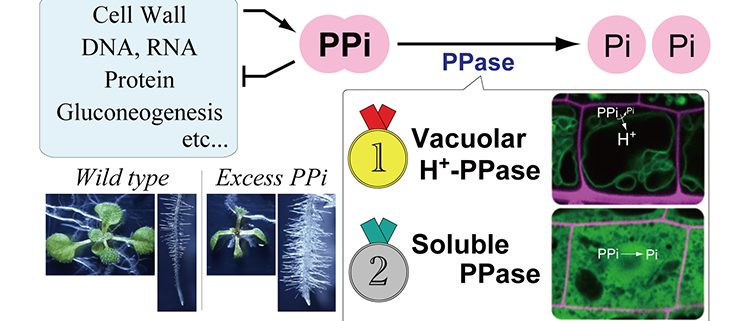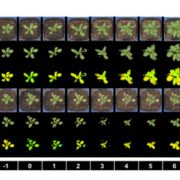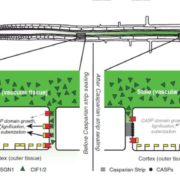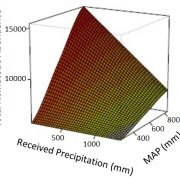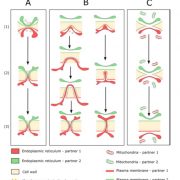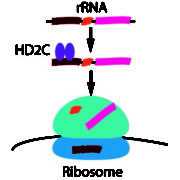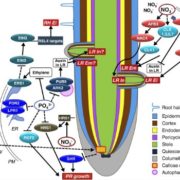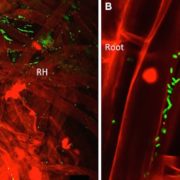Maintaining Cellular Phosphate
Segami et al. investigate cellular phosphate homeostasis in Arabidopsis. Plant Cell https://doi.org/10.1105/tpc.17.00911
Background: Many biological reactions, including the biosynthesis of DNA, RNA, proteins, and polysaccharides, produce inorganic pyrophosphate (PPi). However, accumulation of PPi at high levels suppresses cell activities, such as the biosynthesis of these macromolecules. Therefore, hydrolysis of PPi and maintenance of low PPi levels is essential for all organisms. In animals, yeast, and bacteria, cytosolic soluble pyrophosphatase (sPPase) enzymes are solely engaged in PPi breakdown. In plant cells, the vacuolar proton pump PPase (H+-PPase) is embedded in the vacuole membrane (the tonoplast) and functions to remove PPi from the cytosol and to pump protons into and acidify the vacuole. Although plants also have sPPases, their properties and physiological roles are not fully understood. However, the H+-PPase–deficient mutant fugu5 can grow normally, suggesting that other PPase(s) may contribute to PPi hydrolysis in the cytosol.
Question: Arabidopsis thaliana has a single gene for vacuolar H+-PPase (VHP1/FUGU5/AVP1) and five genes for cytosolic sPPase (PPa1 to PPa5). We wanted to know which one is the major cytosolic sPPase and how these sPPases and H+-PPase cooperatively maintain PPi concentration at proper levels in plant cells.
Findings: We analyzed sPPase knockout mutants of Arabidopsis but found no change in their growth, gross phenotype, and PPi concentrations. Interestingly, double knockout mutants of H+-PPase and sPPase showed significant morphological changes and significant increase in PPi levels. Our findings indicate that H+-PPase functions as a key PPi-hydrolysis enzyme and several sPPases also contribute to prevent increases in PPi concentrations to toxic levels in Arabidopsis. Cell walls of the double mutant fugu5 ppa1, displaying the most severe phenotypes, had low cellulose content and could not mechanically resist a hypotonic stress. Interestingly, fugu5 ppa1 accumulated a lot of starch granules in plastids. It is suggested that high PPi levels change the metabolic flow from cell wall to starch synthesis.
Next steps: Although we demonstrated that sPPases function in plant cells, their physiological importance is still unclear. To pinpoint their roles more precisely, we will further investigate a quadruple mutant, ppa1 ppa2 ppa4 ppa5, which shows a clear phenotype, under a variety of growth conditions.
Segami, S., Tomoyama, T., Sakamoto, S., Gunji, S., Fukuda, M., Kinoshita, S., Mitsuda, N., Ferjani, A., and Maeshima, M. (2018). Vacuolar H+-pyrophosphatase and Cytosolic Soluble Pyrophosphatases Cooperatively Regulate Pyrophosphate Levels in Arabidopsis thaliana. Plant Cell May 2018, 30: 1040-1061; DOI: https://doi.org/10.1105/tpc.17.00911


